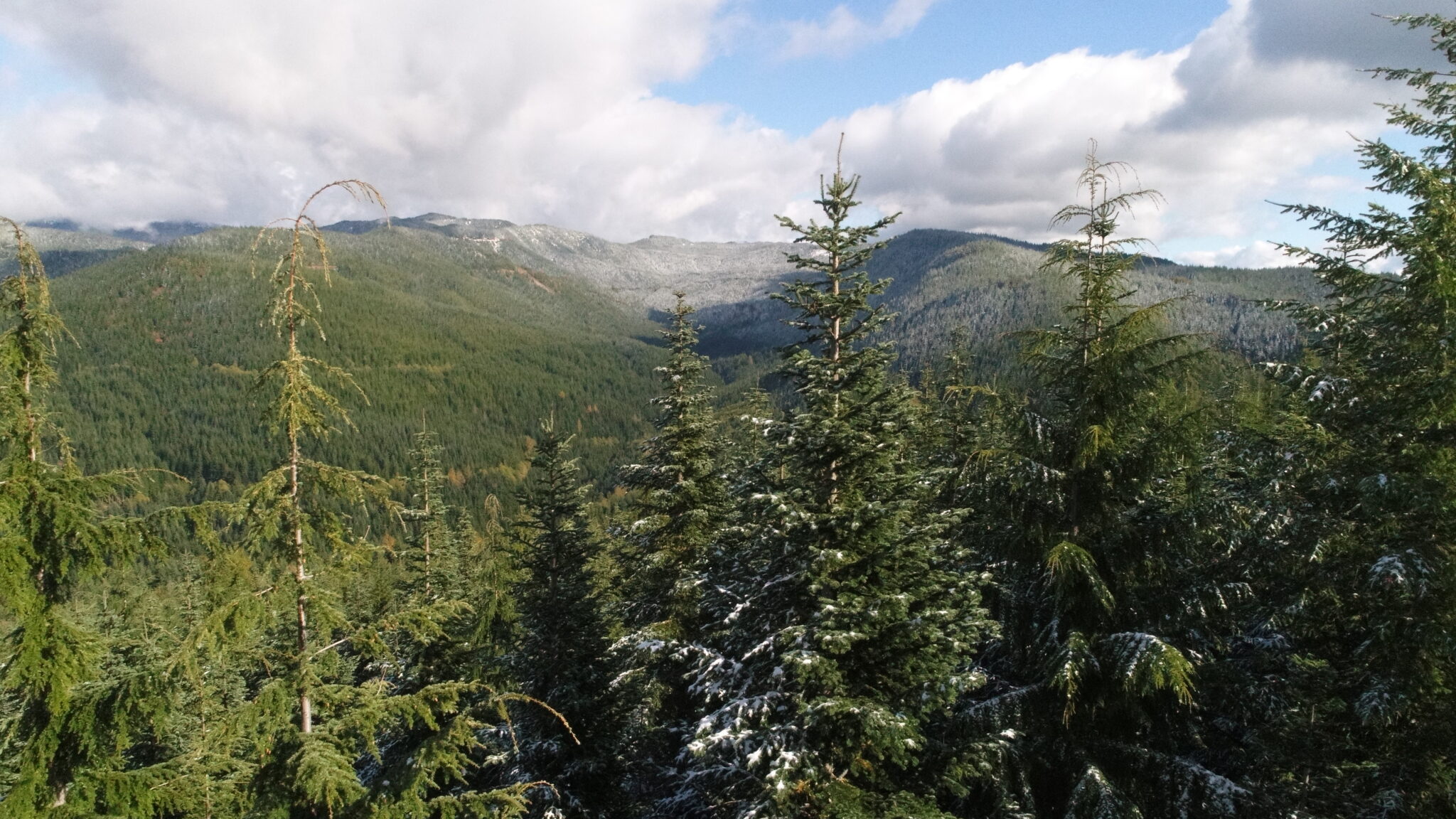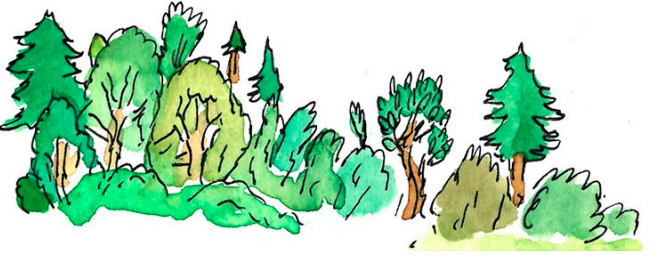
Adaptation Tips for Forest Managers
Climate change is a moving target.
Climate impacts in the Pacific Northwest could follow any of several scenarios, depending on emissions over the coming years. Forest managers need to be aware of a range of potential symptoms and calibrate their responses accordingly.
If you want to take a deeper dive after this brief illustrated overview, take a look at our full Forest Adaptation Guide.

Five Symptoms of Climate Change in our Forests
1. Summer drought
Climate models forecast a longer dry season, and more precipitation arriving during intense “atmospheric river” events, which are less effective at recharging soil moisture.
2. Less snow
Climate models consistently predict less snow for the region. What snow does accumulate will melt earlier in the summer, leaving a longer season when mid- to high-elevation soils are not moistened by snowmelt. The effect will be particularly profound below 4,000 feet.

3. More intense wildfires
The major stand-replacing fires of westside forests are driven by dry east winds in the summertime, which desiccate vegetation and push the fire ahead of them. Short of that, however, dry conditions and standing dead trees predispose the forest to fire, and are apt to lead to more frequent fires, as well as a greater chance that a synoptic wind event will coincide with a fire that is primed to blow up into a conflagration.

4. Heat waves
Temperature spikes that last for several days will become more common, with 2 to 7 times as many days topping 86˚F. Such conditions in the midst of the dry season will stress vulnerable trees, particularly young seedlings and species already near the dry edge of their range.
5. Insect outbreaks
Warmer, drier summers and winters with fewer freezes are expected to increase the frequency and extent of insect outbreaks in forests. Summer conditions may exacerbate moisture stress, making more trees more susceptible to insects. Warmer winter temperatures may further assist many insect species, such as pine beetles and spruce budworm, to overwinter and increase overall reproduction that can lead to larger outbreaks.
Seven Steps to a More Resilient Forest
Many of the actions forest managers can take to make their forest more climate resilient are already familiar techniques.
1. Monitor the forest…
…and be ready to respond
Climate change scenarios cover a wide spectrum of possibilities. Your response will be more effective if you’re tracking the impacts as they unfold.
- Know how the conditions of your site are likely to be affected by climate change.
- Know your soils and what their properties imply for moisture retention and tree growth.

2. Manage for diversity
Greater diversity of species and ages means it’s less likely that a bad roll of the climate dice will degrade an entire stand.
- Manage to retain diverse species and age classes in stands & across ownership and landscapes.
- Observe and use microsites; plant trees that need more moisture or shade within these features.
3. Adapt planting strategies
Planting a forest is a multi-decadal bet on the seedlings’ ability to thrive where you put them. Given today’s range of climate predictions for the 21st century, it makes sense to hedge one’s bets toward seedlings that can withstand a warmer climate.
- Select a planting palette that leans toward drought-tolerant native species, including broadleaf trees.
- Consider assisted migration of native species’ seedstock from other parts of their range. Use species currently native to region, not species from beyond it. The harsher the site, the hotter and drier the zone should be where the seed originated.
4. Manage for lower tree densities
Increasing heat and summer drought mean that soil moisture won’t support the same densities of trees as in the past.
- Plant at lower densities, or plant densely but save time and budget for young-stand thinning.
- Use thinning and variable retention to create space where you can establish more drought-tolerant native species and maintain soil functions even as moisture becomes scarcer.

5. Reduce fire risk
Hotter, drier conditions mean a greater danger of wildfires. But the specific conditions on your site indicate the best way to respond.
- Identify the site’s fire regime.
- If in a frequent, mixed-severity fire regime, reduce ladder fuels and maintain defensible space.
- In infrequent, high-severity fire regimes, roadside fuel breaks and Firewise treatments around homes can make it easier to corral fires before they grow beyond controllable dimensions.

6. Control invasive species
A warmer climate can set the stage for unusually severe pest outbreaks, as insects overwinter where they formerly could not.
- Use early detection rapid response methods.
- Be aware of new invasives or others becoming more virulent.
- Report new sightings to state invasive species control boards.
7. Watch your water
Predicted climate changes mean that managers must prepare for both flood and drought: higher peak flows as more precipitation arrives in larger peak events, and as rain rather than snow – and drought as summer dry seasons become more pronounced.
- Invest in maintaining roads and properly sizing culverts; plan future culvert and bridge installations to sustain larger, more frequent peak flow events.
- Maintain riparian buffers to protect ecosystem functions and moderate water temperatures.
- Use harvest systems that sustain or increase stream flows, such as small gaps that promote snow accumulation and retention.

Climate change is a fact for our forests — and it will be increasingly evident.
However, common sense practices will go a long way in creating a resilient forest for the future while maintaining a healthy forest in the present.
Find more resources at nnrg.org/climateadaptation
Access a pdf version of this guide here
This booklet was produced in 2020 with funding from Western SARE, contract EW16-021,
and the Ned & Sis Hayes Family Fund of the Oregon Community Foundation.
Art by Jon Wagner, whose work appears at jonstreehouse.tumblr.com
